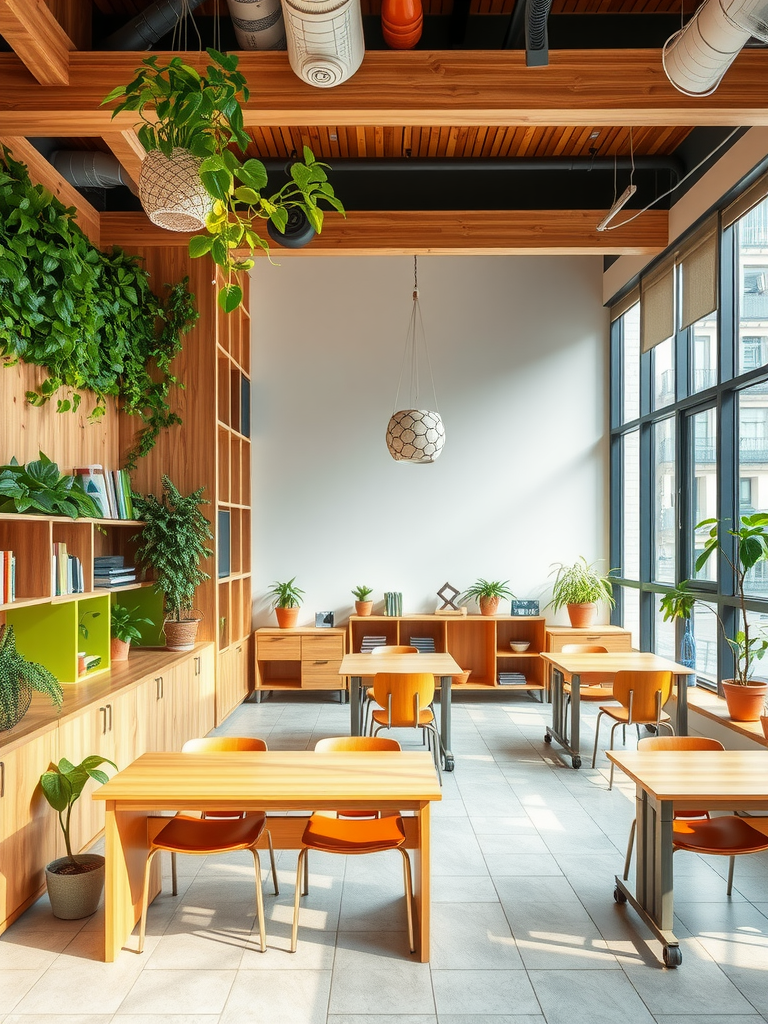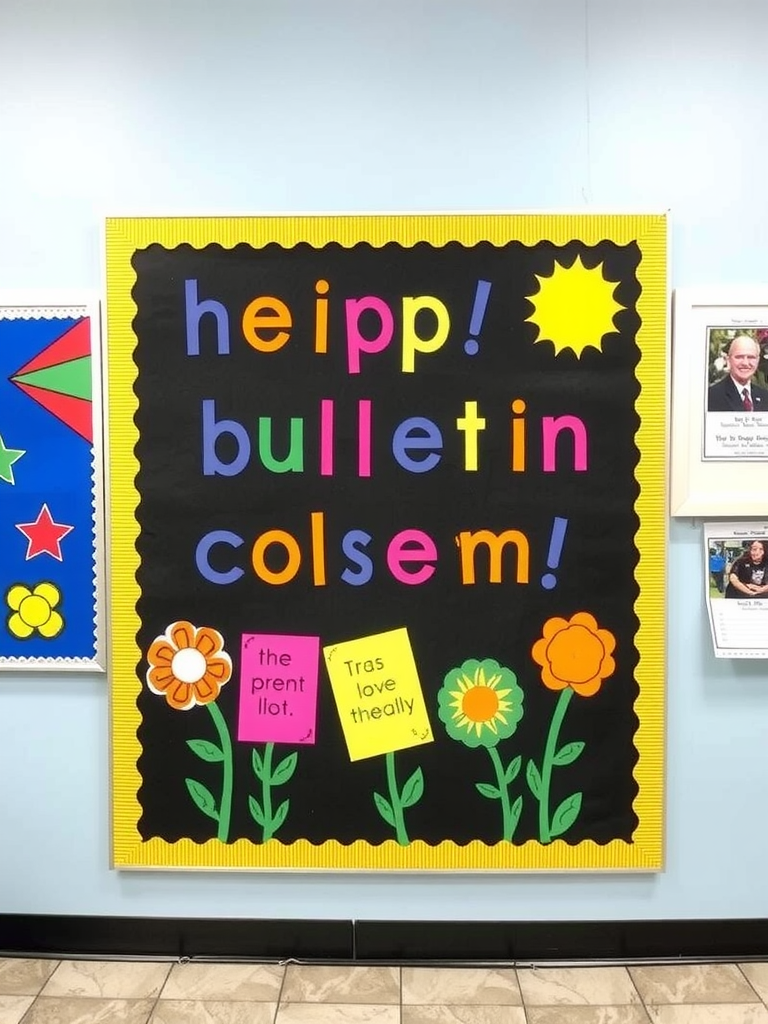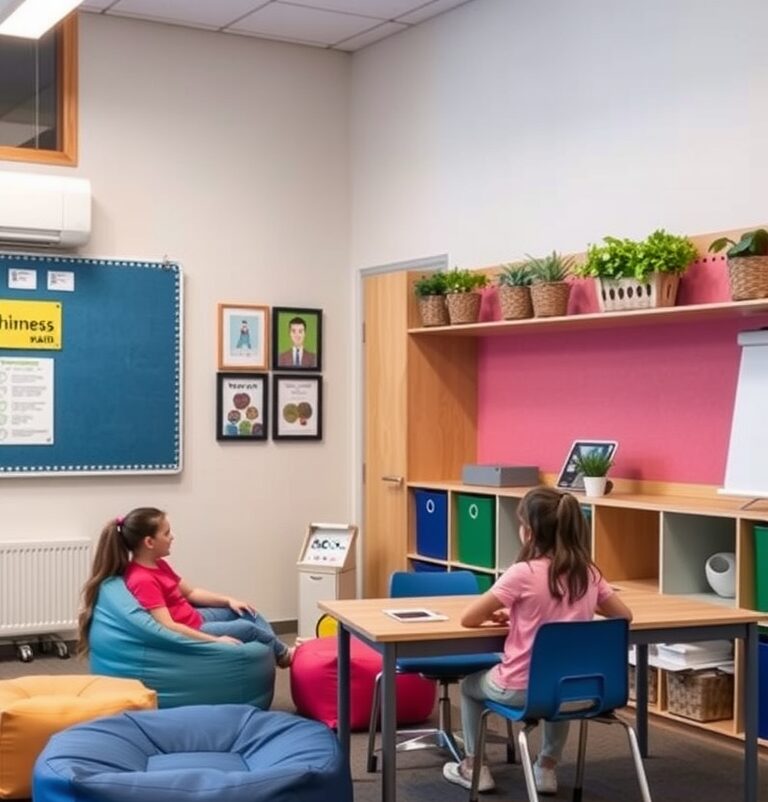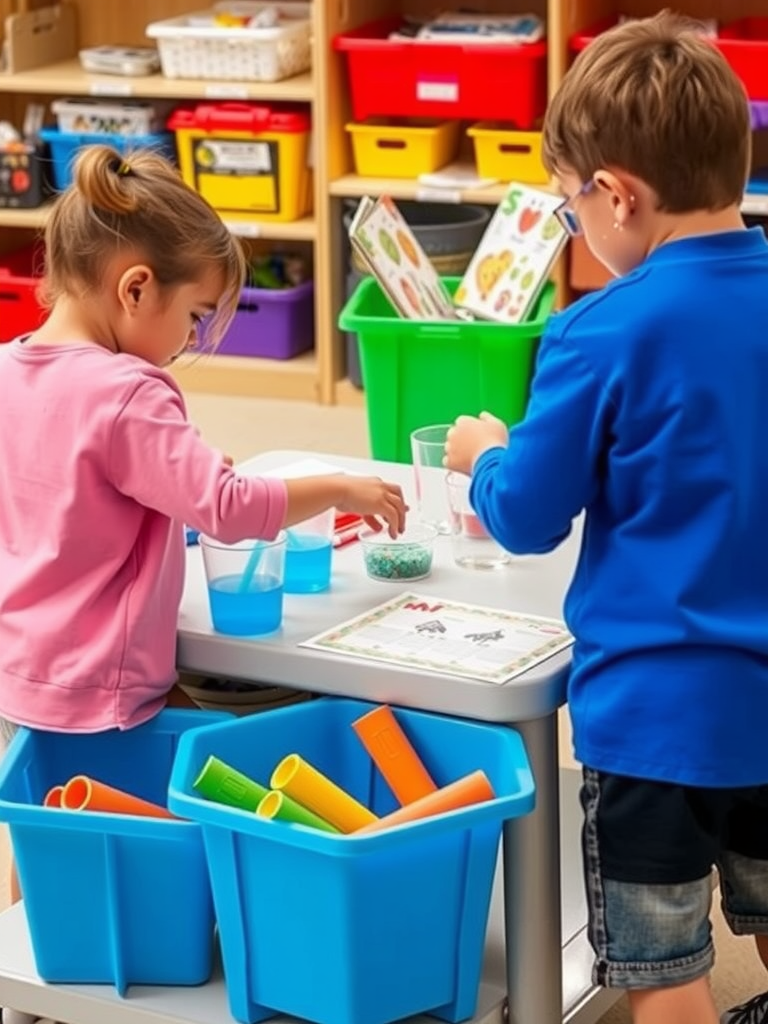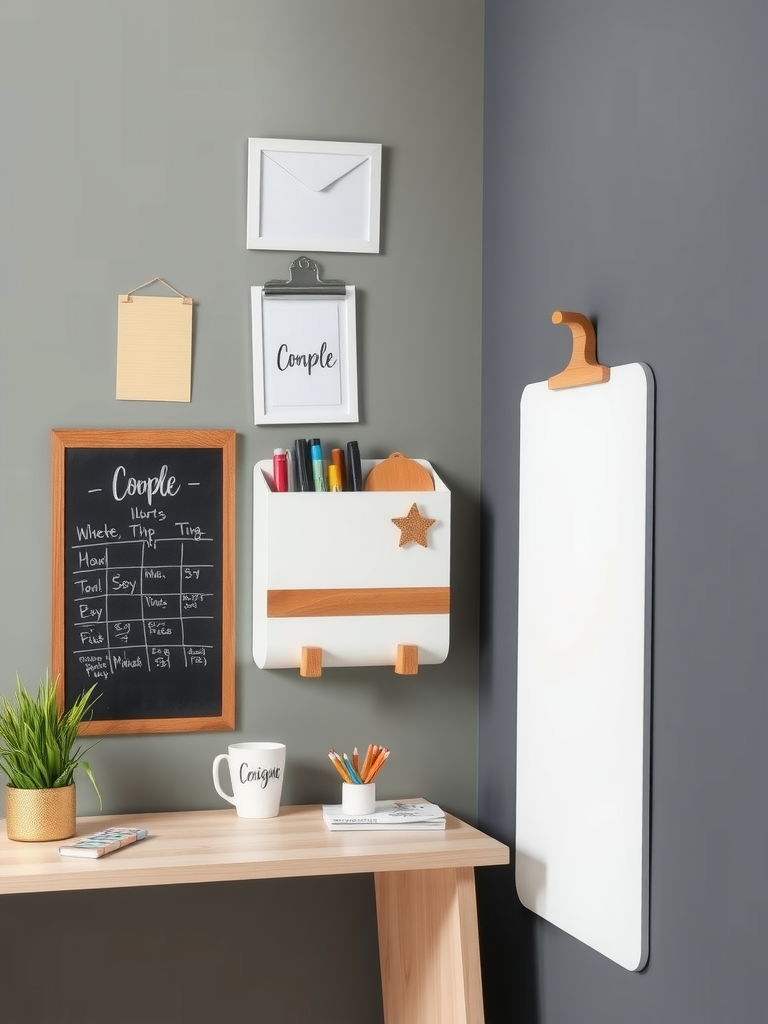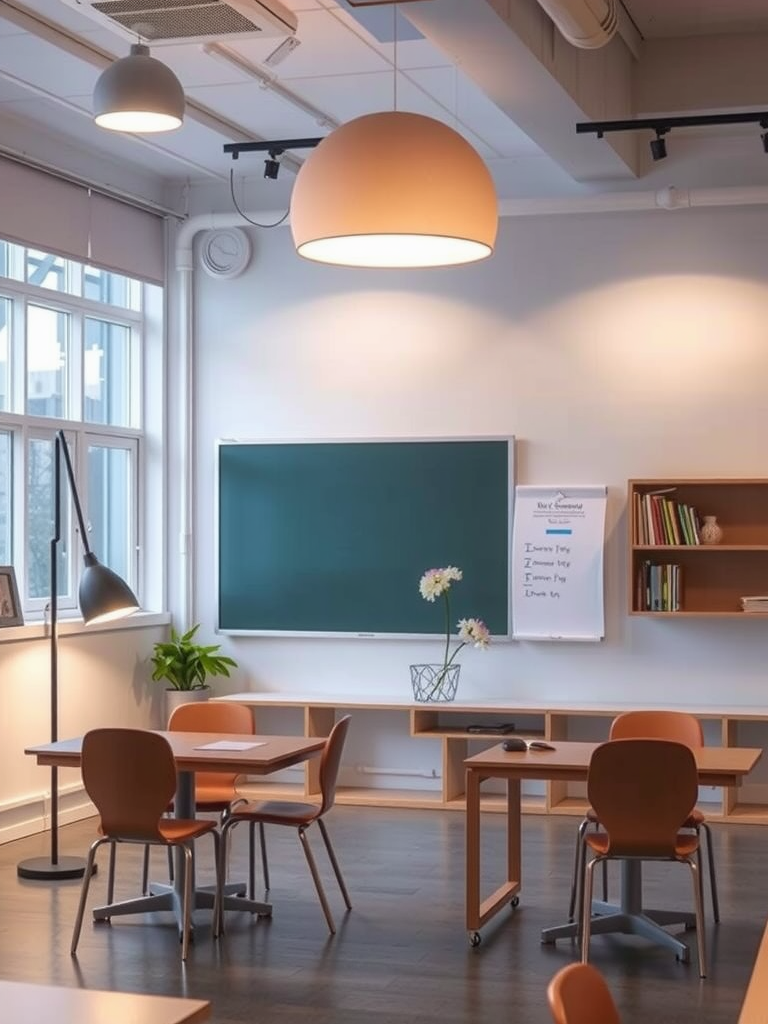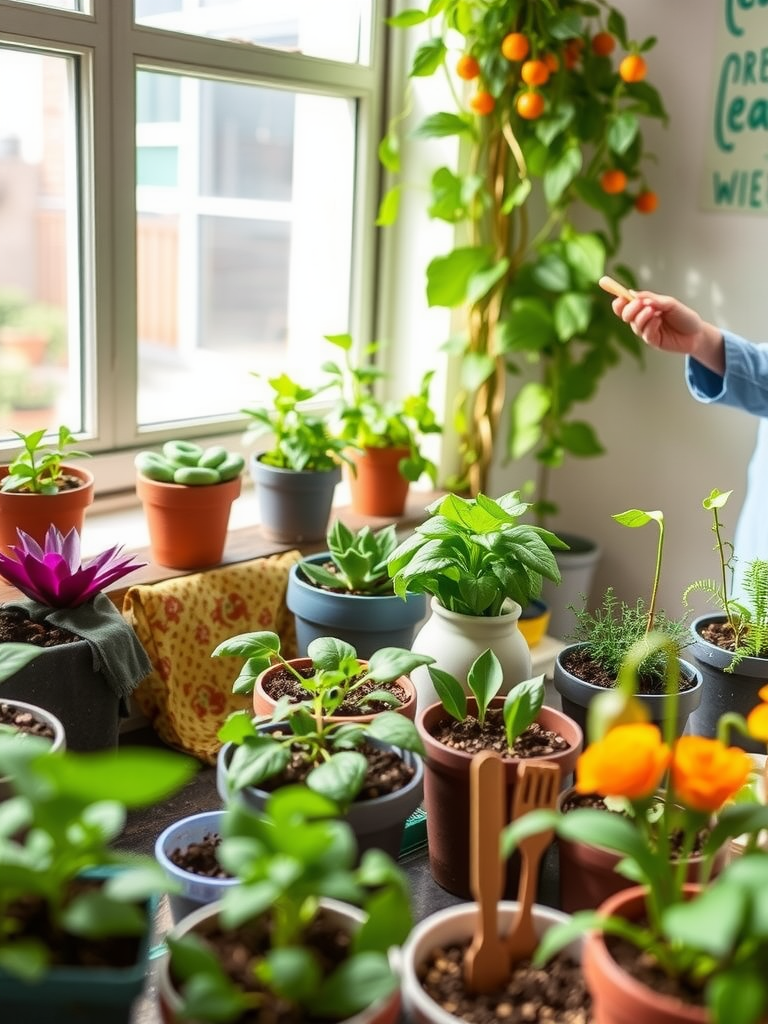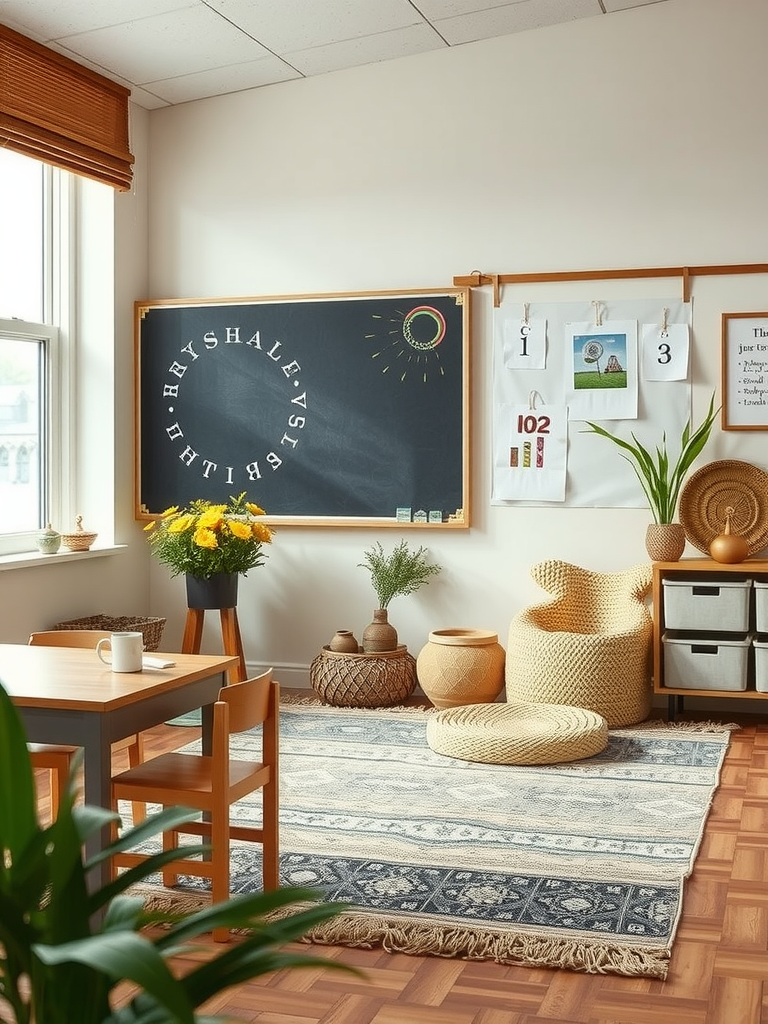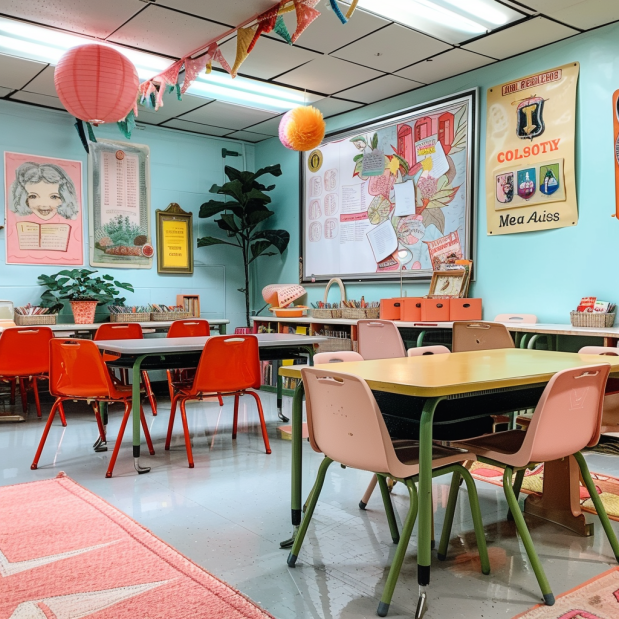Creating an aesthetic classroom is essential for fostering a positive learning environment. The aesthetics of a classroom can influence students’ mood, creativity, and motivation. With the right design choices, educators can craft a space that inspires students and encourages engagement, making learning a more enjoyable experience.
In this article, we will explore 14 aesthetic classroom ideas that can transform a dull space into a vibrant haven for both students and teachers. From innovative seating arrangements to decorative elements that spark interest, these ideas cater to various educational settings and styles.
1. Nature-Inspired Spaces
Incorporating nature into the classroom brings a sense of calm and tranquility. Use plants, natural wood accents, and earthy colors to create a refreshing atmosphere. Consider a vertical garden or potted plants on windowsills to enhance the room’s aesthetics.
Natural light is also crucial; large windows can brighten the space and connect students to the outside world, promoting a sense of well-being.
2. Cozy Reading Nook
Designate a corner of the classroom as a cozy reading nook. Use comfortable cushions, bean bags, or a small sofa to invite students to relax with a book. A small bookshelf filled with engaging literature can enhance this area, making it an attractive spot for quiet reading time.
This inviting space not only promotes literacy but also encourages students to take a break and rejuvenate their minds during the school day.
3. Colorful Bulletin Boards
Create vibrant bulletin boards that reflect current themes, student work, or motivational quotes. Use bright colors and creative layouts to capture attention and spark interest. The visual stimulation of a well-decorated bulletin board can motivate students and make them feel proud of their accomplishments.
Changing the content regularly keeps the classroom dynamic and engaging, leading to ongoing excitement about learning.
4. Flexible Seating Arrangements
Rethink traditional seating by incorporating flexible seating options like bean bags, floor cushions, or standing desks. This approach allows students to choose where they feel most comfortable, promoting collaboration and participation.
Flexible seating encourages movement and can help students focus better during lessons, contributing to a more interactive classroom environment.
5. Inspirational Wall Art
Utilize wall space for inspirational art that reflects learning goals, cultural diversity, or historical figures. Framed posters, student artwork, or murals can add depth to the classroom’s aesthetics.
Art fosters creativity and serves as a daily reminder of the values and aspirations that guide the learning process, making the classroom feel more inclusive.
6. Themed Decor
Select a theme for your classroom, such as space, ocean, or jungle, and let that theme guide your decor choices. This cohesive style can make learning more immersive and fun. From themed decorations to subject-specific materials, the theme can enhance student engagement.
Encouraging students to contribute to the theme, through projects or ideas, empowers them and helps solidify their connection to the classroom environment.
7. Interactive Learning Stations
Set up interactive learning stations throughout the classroom, allowing students to explore various subjects hands-on. Use colorful bins, tables, or carts to create designated areas for science experiments, creative arts, or math challenges.
Interactive stations foster curiosity and promote collaboration among students, making learning more enjoyable and dynamic.
8. Personal Touches
Incorporate personal touches in the classroom that reflect the students’ interests and backgrounds. Use photos, drawings, or cultural artifacts that represent the diversity of the classroom community.
Creating a personal connection to the space fosters a sense of belonging and helps students feel valued and recognized for their uniqueness.
9. Functional Decor
Integrate functional decor that also serves a purpose, such as stylish storage solutions or decorative whiteboards. A wall-mounted organizer can hold supplies while adding aesthetic value, and chalkboard paint can encourage creativity.
This approach maximizes space while maintaining an organized and visually appealing environment.
10. Adjustable Lighting
Lighting significantly impacts the atmosphere of any space. Use adjustable lighting options, such as floor lamps or hanging lights, to create a warm and inviting ambiance. Different lighting options can accommodate various activities, from reading to group projects.
Implementing soft lighting can also reduce eye strain during lessons, making for a comfortable learning environment.
11. Classroom Garden
A classroom garden can inspire students and teach them about nature. Whether it’s a few pots on windowsills or an outdoor garden area, engaging students in gardening promotes responsibility and teamwork.
This hands-on experience not only beautifies the classroom but also fosters a love for nature and the environment, creating real-world connections to their learning.
12. Technology Integration
Incorporating technology into the classroom can enhance learning experiences and make them more interactive. Integrate smartboards, tablets, or educational apps into the classroom design to give students access to a wide variety of resources.
Using technology creatively not only modernizes the classroom but also encourages students to engage with their learning in innovative ways.
13. Textured Elements
Introduce different textures to the classroom through textiles, rugs, and decorative objects. Using varied materials adds depth to the visual appeal and creates a more inviting space. Incorporate items like woven baskets or soft rugs to enhance comfort.
Texture can influence the emotional atmosphere, making the classroom feel cozy and welcoming, which is beneficial for learning.
14. Student-Created Displays
Involve students in creating displays that showcase their work or interests. This could include science projects, art pieces, or collaborative murals that they can take pride in. Showcasing their efforts fosters a sense of ownership and belonging in the classroom.
When students contribute to the decor, it personalizes the space and strengthens their connection to the learning environment.
Conclusion
In summary, an aesthetic classroom plays a vital role in enhancing the educational experience. By implementing these 14 ideas, teachers can create an inviting and stimulating environment that fosters creativity, collaboration, and learning.
Whether through personalized elements or innovative designs, transforming a classroom into an aesthetic space can greatly impact students’ motivation and success.
Frequently Asked Questions
How can I make a small classroom feel larger?
Use light colors, avoid overcrowding, and employ mirrors to create the illusion of more space.
What materials are best for creating a cozy classroom?
Soft fabrics, natural wooden elements, and plenty of cushions can enhance comfort and warmth.
How do I involve students in the classroom decor?
Encourage students to create art, share their cultural elements, or suggest themes, making them part of the process.
What is the importance of classroom aesthetics?
Aesthetics influence mood and motivation, creating a conducive environment for effective learning.
Can I change the classroom design during the school year?
Absolutely! Regular updates to the classroom design can keep the environment fresh and engaging for students.

